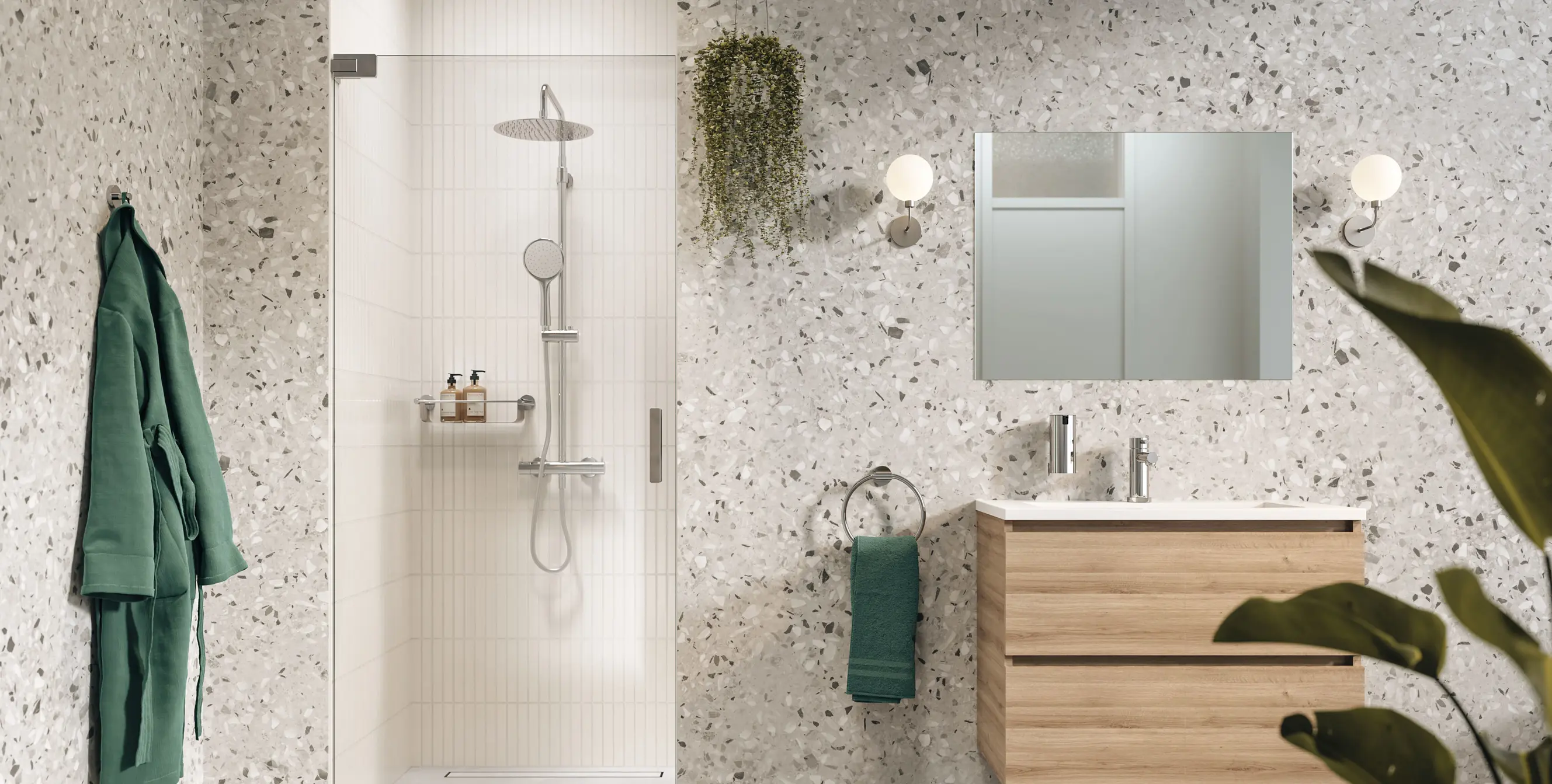As an individual, can I buy directly from Sealskin?
No, that is not possible. Sealskin only supplies sanitary-related companies. Are you a private individual? Then look at points of sale for dealer addresses in your area.
Where can I find price information on Sealskin products?
You can get price information from our dealers. They will make you a customised quotation.
Is there a warranty on Sealskin products?
The warranty period and conditions are always stated at the time of purchase of the product. This guarantee is provided by the retailer from whom you buy the article. For complaints, you should therefore contact the retailer.
Can the drainage strip on my shower door be replaced?
The drainage strip is clamped to the glass plate and can therefore easily be removed. The strips are subject to wear and tear and are therefore not covered by the guarantee. You can order these strips from your local Sealskin dealer. When ordering, please specify the series, type, direction of rotation and dimensions of your shower cabin.
Is Sealglas self-cleaning?
No, but the Sealglas layer does make the glass easier to clean. Compare it to a pan with a Teflon coating. This also gets dirty, but is easy to clean. Use Sealskin shower cleaner for this.
How do I wash and dry my bath mat or toilet mat?
Wash bath and toilet mats at 30° C in the washing machine with a bleach-free detergent. Tumble dry on a low temperature. Do not dry clean!
How do I wash my shower curtain?
Wash textile shower curtains at 30° C with a bleach-free detergent. Hang dry. Ironing the curtain at a low temperature, on the inside, increases the water repellency. PEVA curtains can be washed by hand.
What kind of material is Polyresin?
Polyresin is a composite whose base is rock and resin.
What kind of material is PEVA?
PEVA is a plastic similar to PVC. However, PEVA is more environmentally friendly. PEVA has a nice sheen and is more flexible. A PEVA shower curtain is less susceptible to mould than a textile shower curtain.
What is the difference between a textile and PEVA shower curtain?
A textile shower curtain is very tightly woven. Yet this means that there are very small holes in the fabric. A special treatment makes the fabric water-repellent. A PEVA shower curtain is a plastic type, making it waterproof.
How do I get the creases out of my PEVA shower curtain?
If there are creases in the PEVA shower curtain, the best way is to hang the curtain and spray it with the hot shower. The heat will soften the PEVA and reduce the creases. Repeating this several times [and you can just do this while showering] will make the creases disappear.
My textile shower curtain allows water to penetrate, why is this?
A textile shower curtain is tightly woven and therefore not waterproof, it is water-repellent. It is therefore quite possible that it allows water to pass through slightly. Indeed, this means that when you direct a jet of water at it, a mist passes through. By ironing your textile shower curtain on the inside, you activate the special treatment that makes the curtain more water-repellent. If you want a truly waterproof shower curtain, we recommend you choose from the range of PEVA shower curtains. A PEVA curtain allows absolutely no water through.
What is in the bottom hem of a textile shower curtain?
All textile shower curtains are fitted with a rubber band. The weighting in the hem ensures that the curtain stays in place better.
Why is it that my shower curtain pulls towards me?
This is caused by rising hot air. The hot shower water makes the air in the shower stall warmer. This causes the air to rise. The resulting shortage of air in the shower cubicle is made up by air flowing in from the bathroom under the curtain. This inflowing air blows the curtain towards you. Tip: Use a Sealskin fix clamp to hold the curtain in place.
I extended my clamp rod too far, what now?
Take the caps on both sides of the rod. Pull the narrowest tube (without the spring) all the way out of the wider tube. Push the narrowest tube back into the widest tube. Replace both caps.
I bought a new cotton bath mat and it is fluffy. What can I do about this?
Especially with a new cotton mat, it is possible that it gives off lint at first. This is excess material left behind when the mat was manufactured. This is especially common with high-pile mats made of natural materials. In the first few months of use, the lint will gradually disappear from the mat.
What can I do about the synthetic smell on my newly bought safety mat?
You can easily get rid of the smell by washing the safety mat in a bath of warm water with a dash of washing-up liquid.

